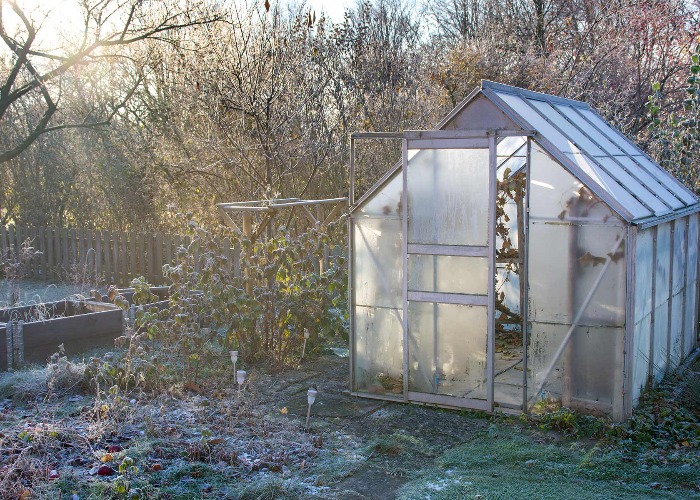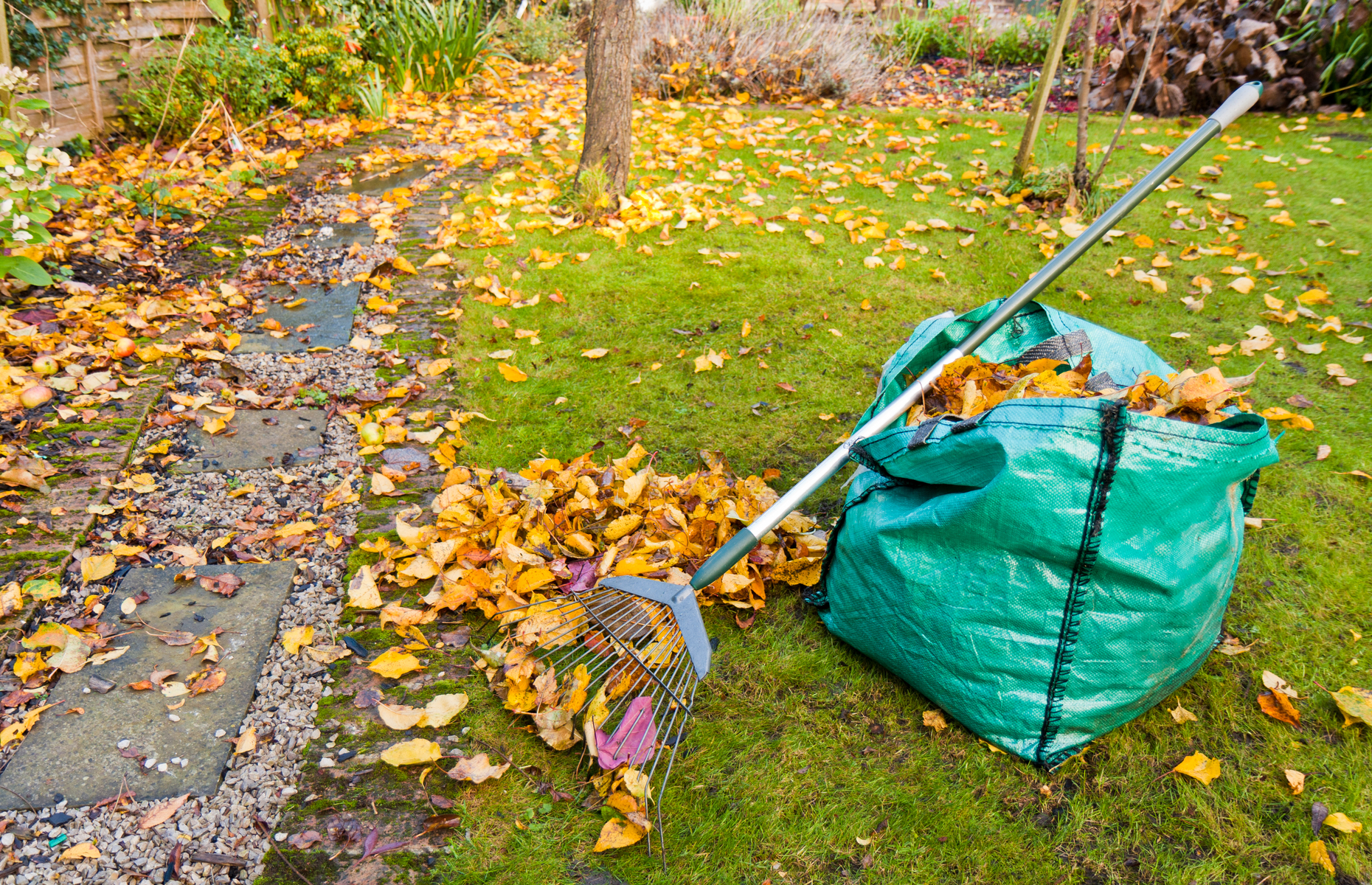How to prepare your garden for winter

Get these essential outdoor jobs ticked off your list now before the real cold weather kicks in
As the nights draw in and the cold creeps up on us, the time we can spend in our gardens shortens.
READ MORE: Gorgeous garden lighting ideas to take you through winter
Winter can be glorious; the first frosts to bejewel the garden, dew-laden spider webs and maybe even snow – but it's important to get your outside space in order so you can make the most of this dazzling frosty season.
A period of rest before its rejuvenation next year, our gardens need winter. Plants need a period of dormancy to grow and many seeds are programmed to experience this before they will germinate.
The cold temperatures will also zap more diseases and unwanted garden pests than a chemical will ever do. Winter offers the perfect clean slate for spring, when the whole beautiful cycle begins again.

Save your autumn leaves to make leaf mould, a super-strength natural fertiliser.
Image: Simon Greig / Shutterstock
People talk about putting the garden to bed for the winter, but there's still so much going on and much to enjoy – we can create beauty even while the garden seemingly sleeps. Here's how to prepare your outdoor space when the temperature drops...
Housekeeping
A balance needs to be attained when tidying up the garden so use your judgment. Do enough to make the space pleasing but not so much that it is stripped bare. Here are the essential clearing jobs to do in the garden before winter:
- By all means, tidy up but consider leaving a messy area at the bottom of the garden as wildlife needs food and shelter during the bleak months. From mammals such as hedgehogs to tiny insects, they benefit from piles of leaves and twigs, seed heads, fallen fruits, ground cover, hedges and dense shrubs.
- Make leaf mould, a fabulous material for improving the soil. Rake up leaves and stuff them in a bin bag with holes in it and leave it to rot down for a year somewhere out of sight – it's a simple gardening hack that can make all the difference to your plants.
- Give your evergreens a haircut. The structure and colour they offer is invaluable. Clipped hedges or box balls instantly create a feeling of order and clarity as well as providing sculptures for ice and snow to transform.
- Any collapsed perennials can be cleared away if they offer nothing to wildlife or the look of the garden. Although there are certain perennials you may want to leave until spring for their chop. For instance, sedums are best left for interest and hardy salvias benefit from keeping their canopy to protect the base from the worst of the weather.
- Leave grasses; they look wonderful in winter and give movement as well as providing shelter and food for wildlife. Spent annuals such as cosmos can be taken to the compost heap once any seeds have been collected for next year.
- Clean and insulate your greenhouse if you have one, this will provide needed warmth and eradicate any pests and diseases from overwintering. Gradually lessen watering of plants under cover as they too need a chance to rest.
Protect your garden from frost
Know the climate of your area. Plants that will survive outside in Kent may not in Yorkshire. And know your garden; some are sheltered, others more exposed, some have heavy soil prone to waterlogging whilst others may have better drainage. All of these factors will affect what you need to do.
Cloches can shelter vulnerable plants that would otherwise struggle with the winter climate.
Image: Crocus
Watch the weather, be prepared and act now, using cloches or horticultural fleece to protect particular plants you know are prone to damage from extreme cold.
Here’s how to prepare:
- Stake anything that will be damaged by high winds and heavy rain. It’s sometimes surprising how powerful and extreme the weather can be.
- What all plants hate in winter is the combination of cold and wet. So, raise any pots off the ground with feet so water can drain away. Consider wrapping terracotta pots at risk with fleece or bubble wrap to prevent them from cracking.
- Lift any tender or half-hardy perennial plants and rehome them in the greenhouse, a cold frame, a shed or conservatory if suitable. In the late summer or early autumn, you can take cuttings of these plants as an insurance policy.
Use a cold frame or other protective environments to shield half-hardy perennials.
Image: Internet Gardener
- After the first frost has blackened the leaves of dahlias, cut the top growth off and lift the tubers. Allow them to dry out thoroughly and store in newspaper somewhere dark, cool but frost-free.
- Mulching around the base of plants will also provide them with some protection. Bark chips or well-rotted horse manure are good, tried and tested gardening options.
Plant ahead for spring
November is the perfect time to plant tulips in the ground as the frost will have killed off any potential diseases lurking in the soil. It is not too late to plant other spring bulbs; even when planted in December you will get a great display, but get cracking!
This pot cross-section shows how to layer spring bulbs for a colourful display, you can see the full video here.
- When planting up pots of bulbs, think about layering them so you have a succession of blooms. Use tulips at the bottom, then after more compost, earlier flowering bulbs like daffodils, iris reticulata and fritillaries, to name but a few choices.
- You can also create beautiful winter displays in window boxes, hanging baskets or pots with a huge array of colour, form and textures. The right winter plants and flowers can give your garden plenty of unexpected vibrancy.

Use window boxes for a burst of colour in winter. Image: 1000 words / Shutterstock
Give soil a reboot
If you have an area where the soil needs an overhaul such as an allotment, vegetable garden or border, it’s a good time to start now.
Choose a time when the soil is not wet and unworkable. Thoroughly weed the area and then break up the soil with a garden fork. This will leave large clods of earth that the winter weather will naturally break down for you.
Come the spring you can add compost or manure and get ready for planting. Thanks winter!
READ MORE: How to treat common garden diseases
Featured image: Jon Naustdalslid / Shutterstock
Comments
Be the first to comment
Do you want to comment on this article? You need to be signed in for this feature


